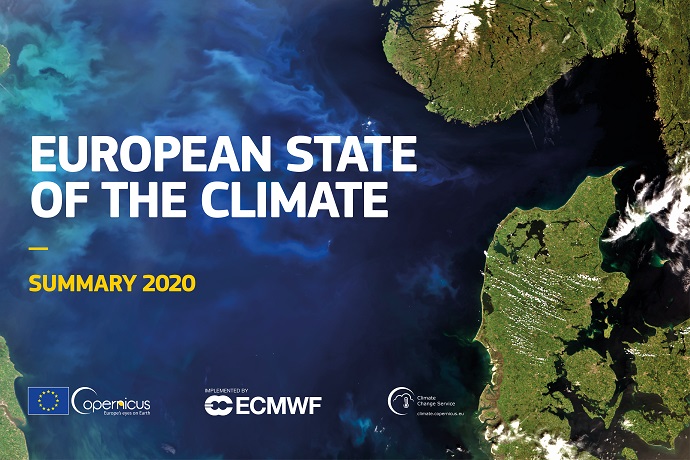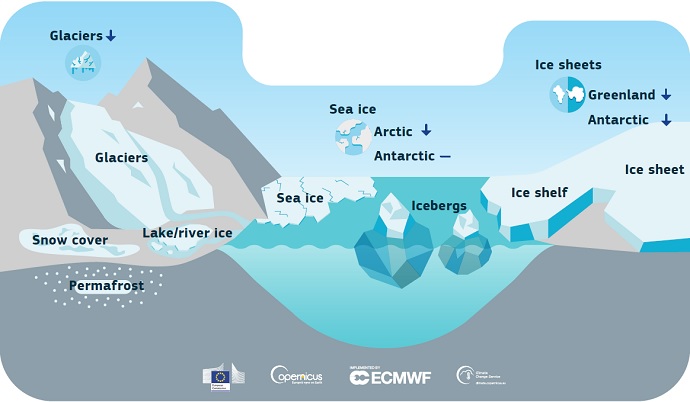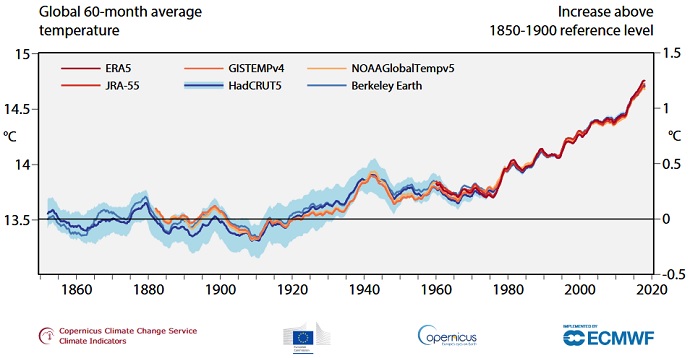

The EU-funded Copernicus Climate Change Service (C3S) implemented by ECMWF has produced a comprehensive overview of last year’s European climate.
The European State of the Climate 2020 also includes a focus on the Arctic and a summary of global conditions.
The annual report presents the kind of consistent and reliable evidence on which measures to mitigate climate change must be based.
Temperature records
The report confirms that last year was the warmest on record for Europe. Winter temperatures were particularly notable, 3.4°C higher than the 1981–2010 average and 1.4°C higher than the second warmest winter on record.
Temperatures over northern Siberia were also exceptional, reaching more than 6°C above average for the year as a whole.
Although many temperature records were broken, heatwaves were not as intense, widespread or long-lived as in previous recent years. Globally, 2020 was one of the three warmest years on record.

Surface air temperature for 2020, shown relative to the 1981–2010 average. Data source: ERA5 reanalysis. Credit: C3S/ECMWF.
The report also reveals that atmospheric concentrations of the greenhouse gases carbon dioxide and methane continued their long-term increase. They were at their highest since at least 2003, when satellite observations began.
Other climate indicators
The report covers some other key climate indicators, such as sea level, glacier and ice sheet melt rate, and soil moisture.
It also finds that, whilst fire danger conditions were close to average as a whole in 2020, total emissions from fires were lower than average in Europe.

The cryosphere encompasses all parts of the Earth system with solid water, including ice sheets, glaciers, snow cover, permafrost and sea ice. Since 1957, glaciers in Europe have lost up to 30 metres of ice. Between 1992 and 2018, the Greenland and Antarctic Ice Sheets lost over 6,520 gigatonnes of ice, causing global sea levels to rise by more than 18 millimetres. In the Arctic, sea ice cover has reduced significantly since 1979, but in the Antarctic, there is no clear trend.
“Importantly, the report puts last year’s data into a longer-term context, enabling trends to be explored,” explains C3S Senior Scientist Freja Vamborg, who collates the report. “This is vital for creating a meaningful picture of the climate.”
The report uses a wealth of data, derived from in-situ observations, satellites, models and reanalysis.
In the case of reanalysis, past observations are combined with computer models to see how trends evolve over longer periods of time.
Exceptional events
The report covers record levels of stratospheric ozone depletion over the Arctic in March.
It also revisits storm Alex, which brought exceptional levels of rain in a short period of time to the UK, northwest France and the southern Alps.
“The report includes detail on the types of data used to explore individual events and trends, as well as the reference periods used to compare the present climate with the past,” says Freja. “The findings are based on data and expertise from across the C3S community, as well as other Copernicus services and external partners.”

Estimated difference in global surface air temperature relative to the 1850–1900 reference period, according to six datasets. Credit: C3S/ECMWF.
“It is more important than ever that we use the available information to act, to mitigate and to adapt to climate change, and accelerate our efforts to reduce future risks,” says Director of C3S Carlo Buontempo.
More information
Explore the European State of the Climate 2020 and press resources.
